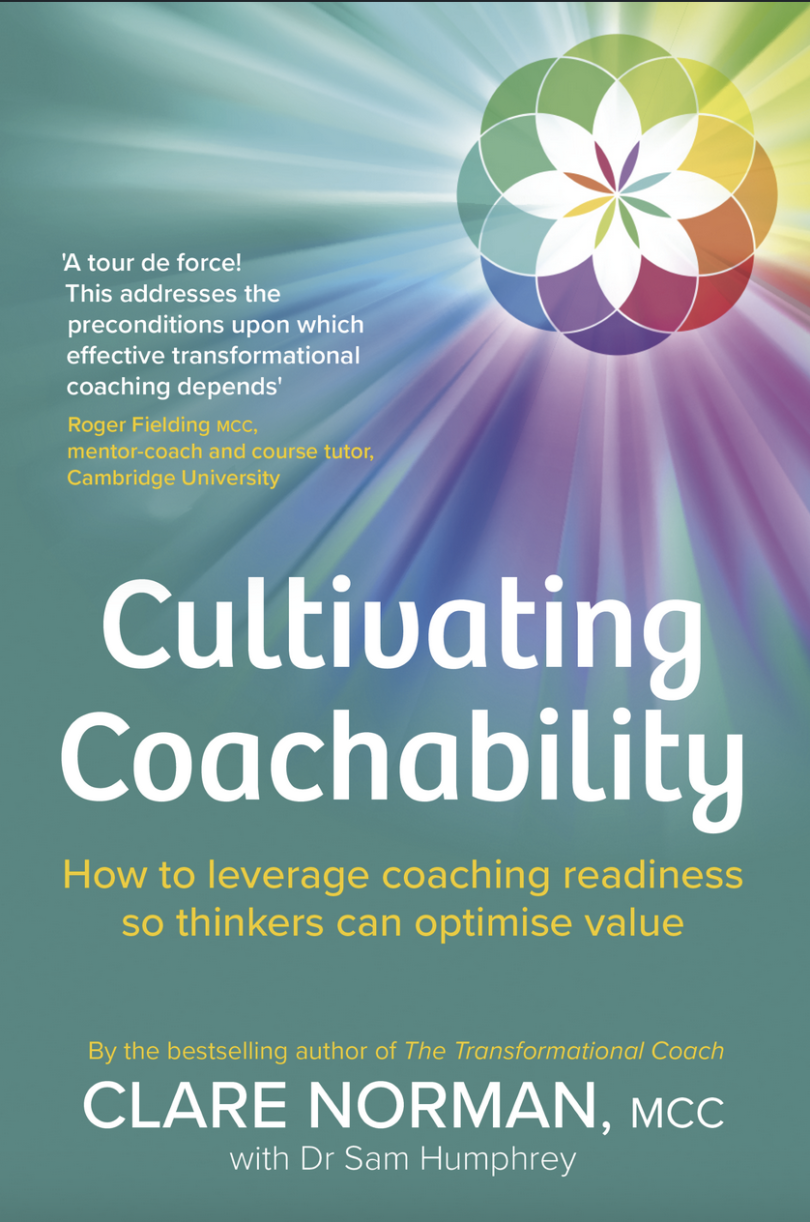Matching is a critical success factor in any coaching assignment. Assuming the work has been done to identify the coaching need and anticipated success measures, and assuming that the coaching custodian has a pool of competent coaches and the thinker is in a place of readiness for coaching, matching is the next step in setting up a successful coaching assignment.
Matching demands a robust process to ensure integrity in how coaching work is allocated and in preserving the organization’s principles around equality, diversity and inclusion. We suggest that you influence coaching custodians to give their active attention to how they match.
Reflective Practice for Current and Aspiring Coaches
- What do you believe about matching for coaching readiness?
- Which of your values are showing up (or even being triggered) as you read this? What does that tell you?
- What will you ask for and from whom? Which of these boundaries are non-negotiable and in which circumstances might you flex?
- What’s the one thing you’ll commit to experiment with that will make a marginal gain in the coaching readiness of the people with whom you work?
What Is the Coach/Thinker Matching Process?
The purpose of matching is to secure the best coach/thinker combination to deliver the coaching work identified at an earlier stage. This process is driven by the coaching brief, which should identify the requirements of the coaching and the coach.
Most organizations conduct some form of matching a thinker with a potential coach(es). This should happen prior to a chemistry meeting but it often isn’t completed with clarity or purpose, leaving coach and thinker vague as to what they need to cover in a chemistry meeting.
It’s useful for the coaching custodian to be clear on their overall matching process to ensure they involve the right people with the right capabilities at the right time.
3 Questions Coaches Should Ask Themselves
Questions you might encourage coaching custodians to consider include:
1. Do they want the thinker to be involved in any of the matching process before the chemistry meeting? If so, how will they brief them on their role and equip them to carry it out well?
There’s no right or wrong answer to this question. The main benefits of involving the thinker in the pre-chemistry stage are the level of ownership and choice they experience over the process, thus building their agency. The main downside is the time required for the thinker to perform this activity for themselves when looking across a large pool of possible coaches.
If the thinker is to be involved at an early stage, the coaching custodian should be urged to consider how they plan to ensure that the thinker will have a logical, reasonable and fair approach rather than one that relies on unconscious or unchecked biases. A checklist with clear criteria will minimize these risks and enable a consistency of process.
We know that some organizations and coaching platforms do leave the thinker to choose from a website full of prospective coaches, maybe with filtering options to help them to whittle down what might feel like a daunting number of coaches. This can be a more cost- and time-efficient process.
We don’t generally recommend early involvement of the thinker in the matching process, as they’re rarely well equipped to conduct this activity though it will give them choice and a sense of their own agency. The coaching custodian will hold knowledge and experience of the coaching pool and is therefore best placed to match possible coaches with the requirements of the coaching.
2. What’s the intended purpose of the chemistry meeting?
Chemistry meetings often conflate several purposes, because the pre-screening and matching stages leading up to it haven’t been properly executed.
We’re sure you’ve experienced the “kitchen sink” purpose of a chemistry meeting — educating the thinker on what coaching is/isn’t, exploring what they might get from being coached, identifying the coaching goal, setting out the coaching process, answering questions about your skill and competence as a coach and then selling yourself as the best coach for them.
These types of “kitchen sink” meetings aren’t a good use of anyone’s time; there’s no guarantee that the thinker will make a good decision and the coaching relationship is set up on potentially inauthentic foundations because the meeting tried to cover too much in too short a time.
If the pre-screening and matching are in place and have been executed thoroughly, the chemistry meeting has a single purpose — determining compatibility.
3. Is there a minimum or maximum number of potential coaches that the custodian wants to make available for the chemistry meeting?
Similar to the above, there’s no correct answer to this question, rather a need to consider what will be the best fit for the coaching program and thinker. This could range from the thinker being assigned a coach to being given a choice of three coaches.
The answer to this question is an important one for coaches because chemistry meetings are often unpaid (for external coaches) yet eat up time (for both internal and external coaches).
Good pre-screening and matching negate the need for thinkers to meet several coaches.
We’d argue that a thinker need only meet the one coach who best fits the needs of the coaching assignment. The chemistry meeting would then be focused on both coach and thinker deciding if/how they’ll work together.

We suspect that many coaching custodians believe that a “beauty parade” of two or three coaches is best practice but we contest this perspective. Given that the quality of the coach/thinker relationship is so important in the success of the coaching, we agree that it’s vital that the thinker has a choice in who they work with.
We also think it’s worth reminding the coaching custodian that choice doesn’t require the thinker to be involved in every step of the screening or to conduct numerous chemistry meetings because ultimately the thinker makes the decision about whether or not they want to work with a coach. This decision is the one that they’re best qualified to make, and they’re the only person who can make it.
Yet they can meet with one coach, make a decision one way or the other, and if the first doesn’t feel like a good fit for them personally, then they can be matched with another coach for a second chemistry session until they’re satisfied they’ve found a compatible match.
This extract is from Cultivating Coachability: How to leverage coaching readiness so thinkers can optimise value by Clare Norman, MCC with Dr Sam Humphrey. Reproduced with permission from Right Book Press.





